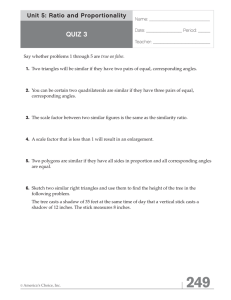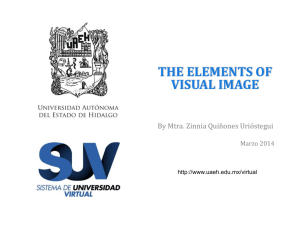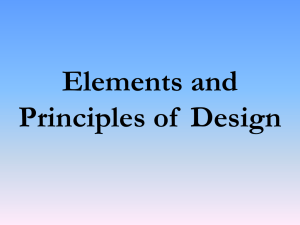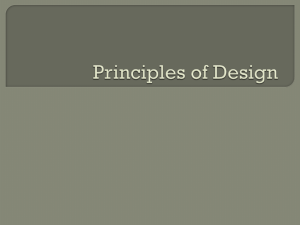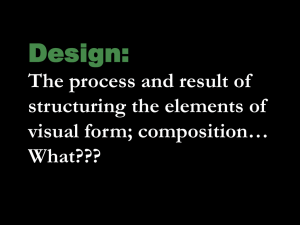Michael Ritchie deliverables AR121 1. General Education Objectives
advertisement
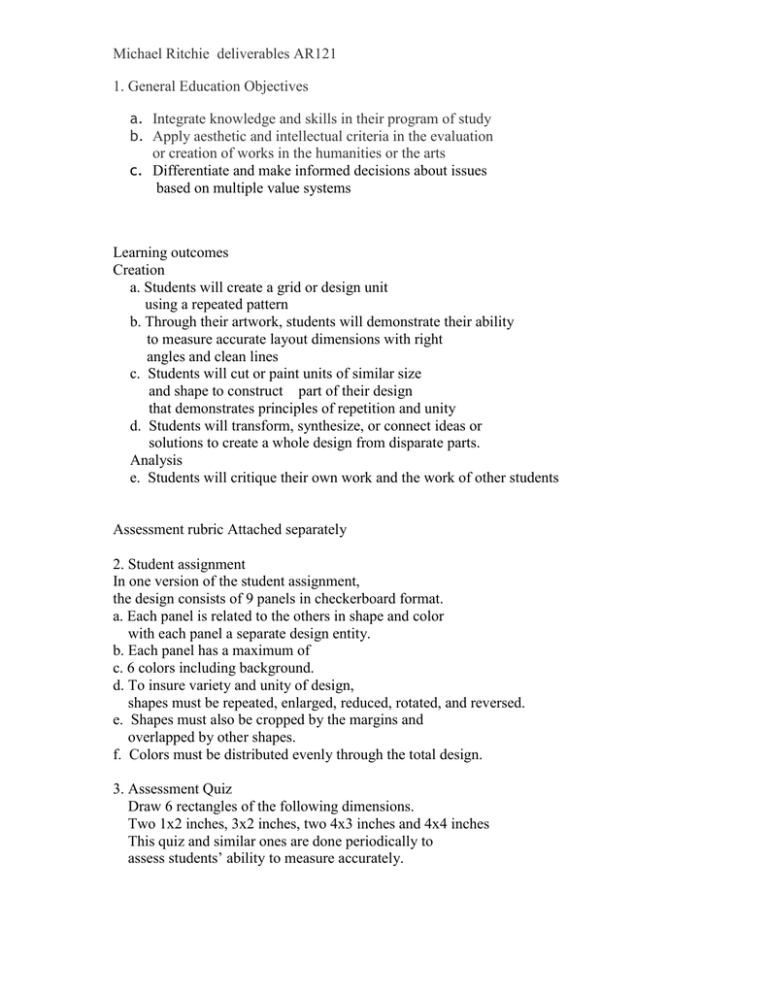
Michael Ritchie deliverables AR121 1. General Education Objectives a. Integrate knowledge and skills in their program of study b. Apply aesthetic and intellectual criteria in the evaluation or creation of works in the humanities or the arts c. Differentiate and make informed decisions about issues based on multiple value systems Learning outcomes Creation a. Students will create a grid or design unit using a repeated pattern b. Through their artwork, students will demonstrate their ability to measure accurate layout dimensions with right angles and clean lines c. Students will cut or paint units of similar size and shape to construct part of their design that demonstrates principles of repetition and unity d. Students will transform, synthesize, or connect ideas or solutions to create a whole design from disparate parts. Analysis e. Students will critique their own work and the work of other students Assessment rubric Attached separately 2. Student assignment In one version of the student assignment, the design consists of 9 panels in checkerboard format. a. Each panel is related to the others in shape and color with each panel a separate design entity. b. Each panel has a maximum of c. 6 colors including background. d. To insure variety and unity of design, shapes must be repeated, enlarged, reduced, rotated, and reversed. e. Shapes must also be cropped by the margins and overlapped by other shapes. f. Colors must be distributed evenly through the total design. 3. Assessment Quiz Draw 6 rectangles of the following dimensions. Two 1x2 inches, 3x2 inches, two 4x3 inches and 4x4 inches This quiz and similar ones are done periodically to assess students’ ability to measure accurately. Assessment Results Evaluation Two D design 121 Rubric Results Total students evaluated: Learning outcomes Creation 1. Students will create a Grid or Design unit using a repeated pattern Semester: Fall 2013 Professor: Excellent 20 Good – 20 Average - 14 Fair – 11 Poor – 8 2. Through their artwork, students will demonstrate their ability to measure accurate layout dimensions with right angles and clean outlines Excellent 24 Good – 21 Average - 13 Fair – 7 Poor 8 3, Students will cut or paint units of similar size and shape to construct part of their design that demonstrates principles of repetition and unity 4. Students will transform, synthesize, or connect ideas or solutions to create a whole design from disparate parts Excellent – 23 Good – 22 Average - 12 Fair – 8 Poor – 8 Analysis 5. Students will critique their own work and the work of other students Excellent Good – Average Fair – Poor Excellent Good – Average Fair – Poor 10 22 19 10 12 8 9 23 16 17 Section A Creation. Category 1 (Ability to measure accurately) A quiz using rulers was given to check measuring accuracy. Each project is graded on accuracy of measurements Many students cannot measure using eighths and quarter inches after repeated attempts. Many cannot create proper right angles. Excellent: 20 Good: 20 Average 14 Fair: 11 Poor 8 Category 2 (Neat edges with thorough cutting and gluing) Some have difficulty with cutting and gluing leaving irregular rough edges. Excellent: 24 Good: 21 Average 13 Fair: 7 Poor 8 Category 3 (principles of repetition and unity) This causes cause problems with some. Students are told to repeat, enlarge and reduce shapes to create repetition and unity in a design. Many simply repeat the directions without little or no sense of design. Excellent: 23 Good: 22 Average 12 Fair: 8 Poor 8 Category 4 (transform, synthesize, or connect) Many have problems creating a complete design utilizing the visual material required in the beginning of the assignment. Many have difficulty fulfilling the requirements of the assignment Excellent: 16 Good: 22 Average 19 Fair: 10 Poor 12 Section B Category 5 (Analysis) Many students do not take part in the critiques. Some have problems since English is a second language.. Many have difficulty using proper terminology describing artwork. Excellent: 8 Good: 9 Average 23 Fair: 16 Poor 17 Action Plan We will institute the following: • Students will be given low intensity papers to write in class during critiques. This will allow us to get feedback from everyone. • Students will be quizzed regularly on use of terminology • Students will be given short low intensity quizzes using rulers and right angles. • Students will be shown more design by famous artists and designers. Artifacts 9 panel shape assignment Shape variation assignment collage variations s


